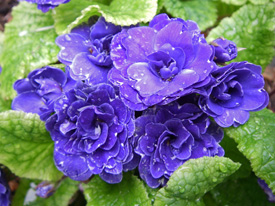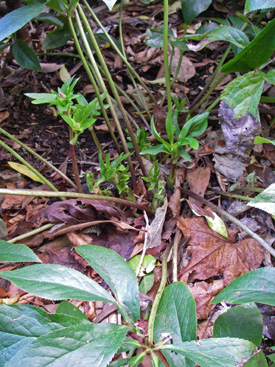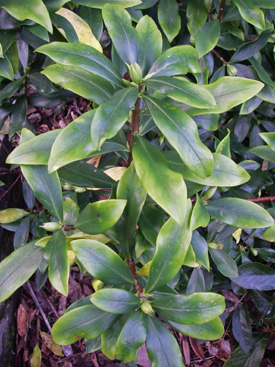Autumn clean-up
May 2014
Winter is approaching and there is still so much to do and enjoy in the garden. I love winter because it is the time when you have the best opportunity to change the 'architecture' of your garden, with sought after trees and shrubs that are often only available during these winter months.
This week I tackled my south-side garden – the one at the end of the house that bears the brunt of the southerlies that roar in off the Cook Strait. It gets no sun in winter and limited in summer. This garden holds my treasured collection of Hellebores plus some favourite perennials and shrubs – carefully chosen for my limited space. It’s been neglected for a few months so it’s time for the annual tidy and trim.
The Ajuga “Jungle Beauty”, with its dark blue flowers and bronzed leaves, has rampaged across the garden and set new plants. It is easy to control with a bit of pulling and careful selection of the plants to keep. A good tug will lift the ones I don’t want, roots and all. There are so many of these I could plant a whole new garden but I just don’t have the space.
The violets have also rampaged around their neighbours but I leave them largely alone to fill in the gaps.
Omphalodes cappadocica delights with sprays of sky-blue flowers in spring and the foliage is a soft green. The few small plants I put in last year have grown into sturdy clumps with a scruffy understory of dead leaves. I pulled these away and thinned out the clumps with a few good tugs.
These hardy perennials can be so forgiving that even if you do get a bit carried away with the pulling, they will always grow back. Hidden in amongst them are a few primroses which will flower soon now they have more space and light.
A beautiful tall Aster (name forgotten) put on a spectacular display of deep blue flowers in April but is now all seed heads. I cut the long stems back to ground level and it will sit quietly at the back of the garden until next year.
The hellebores look scruffy in their old leaves, so I cut all the past year’s leaves down to just above ground level. The new buds can be seen poking through and in a few weeks the new leaves and flowers will be up. With the old leaves gone, I sprinkle a handful of lime over each clump then mulch them with horse manure – the stuff you see in bags on the side of the road for a dollar.
The daphne is showing signs of flowering soon. It looks a little sick with slightly yellow leaves but this is a common condition of daphne before they flower and it does not affect their flowering or growth. I feed mine a handful of acid fertiliser (the same one for camellias and rhododendrons) in the autumn and again in spring. Many daphne only live for 10 to 12 years so at some point feeding makes little difference and it is best to pull it out and purchase a new plant for a fresh spot in the garden.
One aspect of winter I don’t enjoy is not seeing my garden until the weekend. It’s dark in the morning going to work and its dark coming home. The garden can be a bit of a surprise by the weekend when you catch up on all that’s changed during the week.
30-May-2014

Omphalodes cappadocica

Primrose

Hellebore

Daphne

